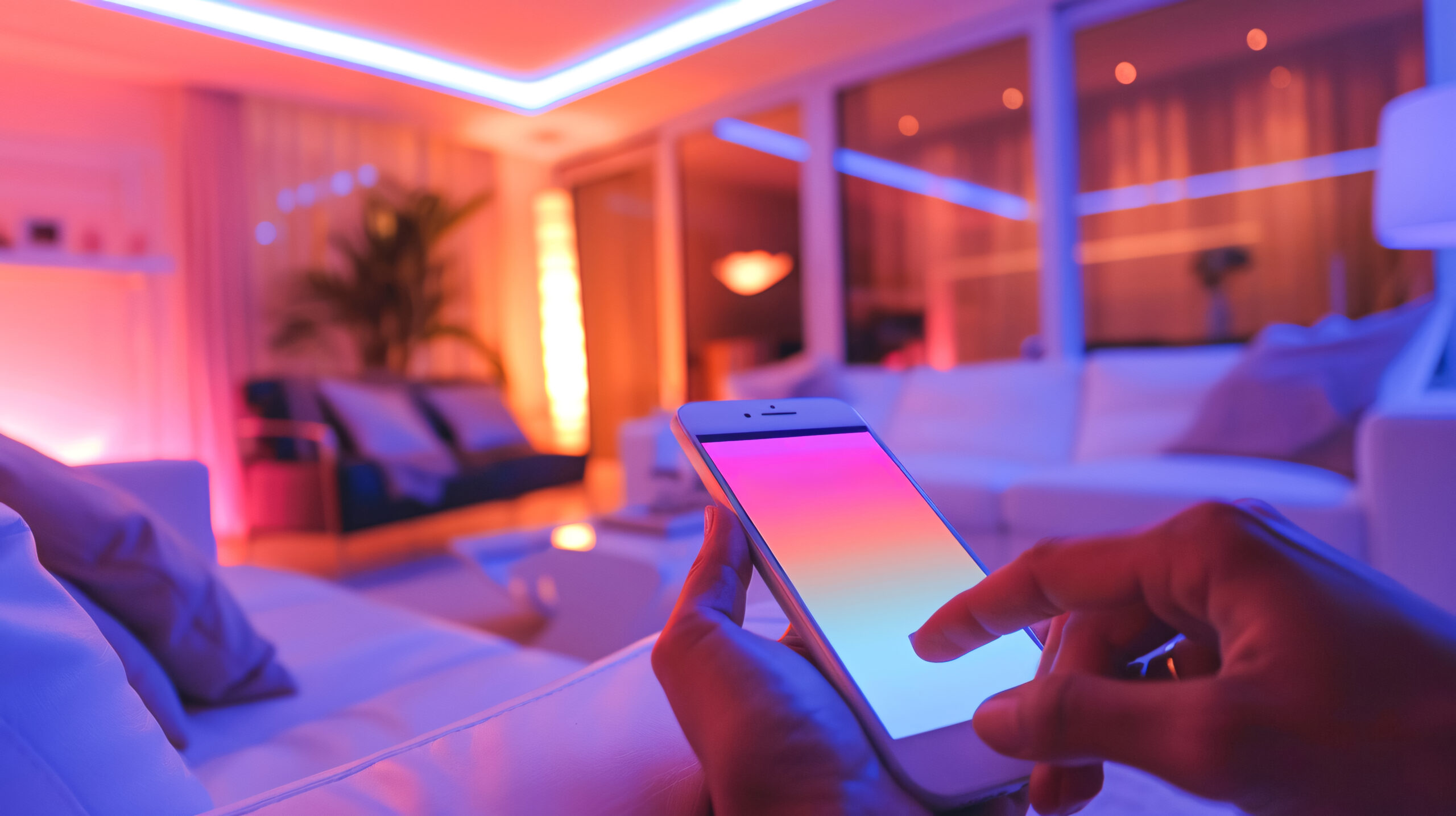Smart lighting has revolutionised the way we illuminate our homes, offices, and outdoor spaces, offering enhanced control, convenience, and energy efficiency compared to traditional lighting systems. In this comprehensive guide, we’ll explore the various types of smart lighting options available, their key features, benefits, and how they work.
Types of Smart Lighting Options
- Smart Bulbs: Smart bulbs are LED light bulbs equipped with wireless connectivity, allowing them to be controlled remotely via smartphone apps, voice commands, or automation routines. These bulbs come in a variety of shapes, sizes, and functionalities, including dimmable white bulbs, colour-changing bulbs, and tuneable bulbs that adjust colour temperature.
- Smart Switches and Dimmers: Smart switches and dimmers replace traditional light switches and dimmers, adding intelligence and connectivity to existing lighting setups. They allow users to control lights remotely, set schedules, and create automation routines. Some models also feature occupancy sensors and ambient light sensors for added convenience and energy savings.
- Smart Lighting Systems: Smart lighting systems consist of multiple components, including bulbs, switches, sensors, and a central hub or controller. These systems offer comprehensive control over entire lighting setups, allowing users to create custom scenes, automate lighting based on triggers like motion or time, and monitor energy usage.
Key Features of Smart Lighting
- Remote Control: One of the primary features of smart lighting is the ability to control lights remotely from anywhere using a smartphone app or voice commands. This allows users to turn lights on or off, adjust brightness levels, and change colours without having to be physically present in the room.
- Scheduling: Smart lighting systems often include scheduling capabilities, allowing users to program lights to turn on or off at specific times of the day or in response to sunrise and sunset times. This feature is particularly useful for creating a sense of security when away from home or for automating lighting routines.
- Dimming and Colour Changing: Many smart bulbs offer dimming capabilities, allowing users to adjust the brightness levels to suit their preferences or create ambiance for different activities. Colour-changing bulbs take it a step further by allowing users to choose from millions of colours to create customised lighting scenes.
- Integration with Smart Home Ecosystems: Smart lighting options are compatible with popular smart home ecosystems such as Amazon Alexa, Google Assistant, and Apple HomeKit, allowing for seamless integration with other smart devices and voice control.
- Energy Efficiency: Smart lighting solutions are designed to be energy-efficient, helping users save on electricity bills while reducing their carbon footprint. Features such as scheduling, dimming, and occupancy sensing contribute to energy savings by ensuring that lights are only used when needed.
How Smart Lighting Works
- Smart Bulbs: To set up smart bulbs, users simply replace existing light bulbs with smart equivalents and connect them to a compatible smart home platform or hub. Once connected, users can control the bulbs via the associated app or voice commands. Some smart bulbs also come with their own built-in Wi-Fi or Bluetooth connectivity, eliminating the need for a separate hub.
- Smart Switches and Dimmers: Installing smart switches and dimmers involves replacing existing light switches or dimmers with smart equivalents. These switches and dimmers are then connected to a compatible smart home platform or hub, allowing users to control lights remotely via the associated app or voice commands. Some models may require a neutral wire for installation, while others are designed to work without one.
- Smart Lighting Systems: Smart lighting systems typically consist of bulbs, switches, sensors, and a central hub or controller. Users install smart bulbs, switches, and sensors throughout their home or building and connect them to the central hub. The hub communicates with individual devices and allows users to control and automate their lighting setup via a dedicated app or voice commands. Advanced systems may also offer features such as scene creation, automation based on triggers like motion or time, and energy monitoring.
Benefits of Smart Lighting
- Convenience: Smart lighting offers unparalleled convenience, allowing users to control their lights from anywhere using their smartphone or voice commands. Whether it’s turning off forgotten lights, adjusting brightness levels, or changing colours, users have complete control at their fingertips.
- Energy Savings: Smart lighting solutions are designed to be energy-efficient, helping users save on electricity bills by optimising usage and reducing waste. Features such as scheduling, dimming, and occupancy sensing ensure that lights are only used when needed, minimising energy consumption.
- Customisation: With smart lighting, users can customise their lighting setup to suit their preferences and lifestyle. Whether it’s creating personalised lighting scenes for different activities, adjusting color temperatures to match the time of day, or automating lighting routines, the possibilities for customisation are endless.
- Security: Smart lighting can enhance home security by deterring intruders and creating the illusion of occupancy when away from home. Features such as scheduling and motion sensing allow users to automate lighting routines to make it appear as though someone is home, adding an extra layer of protection.
- Integration: Smart lighting options seamlessly integrate with other smart home devices and ecosystems, allowing for a cohesive and interconnected smart home experience. Whether it’s syncing lights with music, integrating with smart thermostats for energy savings, or triggering lights based on sensor inputs, the possibilities for integration are vast.
Conclusion
In conclusion, smart lighting options offer a plethora of features and benefits that enhance the way we illuminate our living spaces. Whether it’s the convenience of remote control, the energy savings of automation, or the customisation of lighting scenes, smart lighting solutions empower users to create lighting experiences tailored to their preferences and lifestyle. With a variety of options available, from smart bulbs and switches to comprehensive lighting systems, there’s a smart lighting solution to suit every need and budget.




 No products in the basket.
No products in the basket. 
